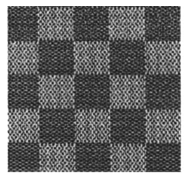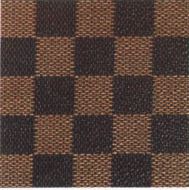Gepubliceerd op woensdag 6 mei 2015
Geen onderscheidend vermogen schaakbordpatronen door gebruik
Gerecht EU 21 april 2015, IEF 14914; ECLI:EU:T:2015:214; T‑360/12 (Louis Vuitton Malletier - grijs schaakbord)
Gerecht EU 21 april 2015, IEF 14914; ECLI:EU:T:2015:215; T‑360/12 (Louis Vuitton Malletier - bruin/beige schaakbord)

 LV vraagt Gemeenschapsbeeldmerk aan voor een grijs respectievelijk bruin/beige schaakbordpatroon. Op absolute gronden, vanwege ontbreken van onderscheidend vermogen (ook niet door het gebruik ervan), wijst de nietigheidsafdeling van het BHIM de nietigheidsvordering toe. Er wordt vast gesteld dat LV niet heeft aangetoond dat dit merk onderscheidend vermogen heeft gekregen in de genoemde 11 landen als gevolg van het gebruik van het merk. Het Gerecht EU wijst het beroep af.
LV vraagt Gemeenschapsbeeldmerk aan voor een grijs respectievelijk bruin/beige schaakbordpatroon. Op absolute gronden, vanwege ontbreken van onderscheidend vermogen (ook niet door het gebruik ervan), wijst de nietigheidsafdeling van het BHIM de nietigheidsvordering toe. Er wordt vast gesteld dat LV niet heeft aangetoond dat dit merk onderscheidend vermogen heeft gekregen in de genoemde 11 landen als gevolg van het gebruik van het merk. Het Gerecht EU wijst het beroep af.
7. (...) The Cancellation Division concluded, in paragraph 61 of its decision, that that lack of evidence as regards those States was sufficient to find that the applicant had not established that distinctive character had been acquired through use.
10. (...) The Board of Appeal also took the view, in paragraph 54 of the contested decision, that the documents produced by the proprietor of the contested trade mark did not demonstrate that the relevant public would be in the habit of making an assumption on the commercial origin of the goods at hand based on patterns. Lastly, the Board of Appeal considered, in paragraphs 71 to 73 of the contested decision, that, on the basis of the evidence provided by the applicant, it had not been established that the contested trade mark had acquired distinctive character through the use which had been made of it in a substantial part of the relevant territory, namely in Bulgaria, Denmark, Estonia, Latvia, Lithuania, Malta, Poland, Portugal, Slovenia, the Slovak Republic, Finland and Sweden, either at its filing date or after its registration.
86 It follows from the unitary character of the Community trade mark that, in order to be accepted for registration, a sign must possess distinctive character, inherent or acquired through use, throughout the European Union. It would be paradoxical to accept, on the one hand, pursuant to Article 3(1)(b) of Directive 2008/95/EC of the European Parliament and of the Council of 22 October 2008 to approximate the laws of the Member States relating to trade marks (OJ 2008 L 299, p. 25), that a Member State has to refuse to register as a national mark a sign that is devoid of any distinctive character in its territory and, on the other hand, that that same Member State has to respect a Community trade mark relating to that sign for the sole reason that it has acquired distinctive character in the territory of another Member State (judgment of 14 December 2011 in Vuitton Malletier v OHIM — Friis Group International (Representation of a locking device), T‑237/10, EU:T:2011:741, paragraph 100).
117 For all of those reasons, it must be held that, in any event, the applicant has not demonstrated that the contested mark had, in Bulgaria, Denmark, Estonia, Latvia, Lithuania, Malta, Poland, Portugal, Slovenia, the Slovak Republic, Finland and Sweden, acquired distinctive character in consequence of the use that had been made of it.
120 It was, therefore, for the applicant to prove the acquisition of distinctive character through use in the part of the European Union in which the contested mark was devoid of any distinctive character ab initio, which is, in the present case, the whole of the European Union. However, as is clear from paragraph 104 above, the applicant has not filed any of the evidence referred to in the case-law recalled in paragraph 90 above and the evidence adduced by the applicant, as set out in paragraph 95 above, does not demonstrate that the contested mark has acquired distinctive character through use in Denmark, Portugal, Finland and in Sweden.





















































































